Post by Seanstone on Jan 18, 2012 1:04:25 GMT -5
Finished a rough draft of another post on the blog. Fishing was pretty rough this weekend so I had to make a different post. It's not actually up on the blog yet, but here it is:
Throughout the years we have begun to target bigger waters and bigger fish. With this shift we have made adaptations to our rigs in order to successfully catch fish. We have learned that certain applications call for different sinkers, weights, and styles. Sinkers are as diverse as each application, they come in hundreds of sizes and shapes. They range from sizes of a fraction of an ounce to several dozen ounces. In the past several years we have experimented with dozens of different types and sizes, and we have learned quite a bit about each. As mentioned before, we aren't experts.....just fisherman with a passion for the sport.
Sinkers can be used for many reasons. They can be used to add distance to ones cast, to make a float stand correctly, keep a bait on bottom, or to increase the rate of sinking of a somewhat buoyant bait.

Some of the most common sinkers we use include: split shots, egg sinkers, coin sinkers (and hybrids), pyramid sinkers, bank sinkers, and no rolls. Each sinker was tailored for a specific type of fishing, or type of application. By far the most commonly used sinker would be the split shot. These are the smallest sinkers made, and the easiest to use. Some models have wedges or tails near the back that allow one to open and close the spit shot to easily apply to a line. With that being said, they have been known to cause line failures. By pinching the split shot onto your line, you are actually crimping the line, thus weakening it. It is important to note here that throughout our fishing experience we have found that knots are by far the weakest link of all fishing rigs. That is to say that we have broken off more often at the knot that ties the hook onto our line, than we have at our split shots. Applications of split shots vary greatly. The most common applications include the use of a float, slip or spring, a few feet of line, some split shots, and a hook. Pictured to the right.

Slip float rig with split shots.
Other applications include a simple hook and split shot, artificial and split shot, etc.
Probably the second most common sinker we use is the egg sinker. The egg sinker ranges from one quarter of an ounce to several ounces. The main benefit of using an egg sinker is the ability of the sinker to slide on your main line. When fishing on the bottom the fish can take the bait all of the while the sinker stays in one spot on the bottom, thus not feeling the weight of the sinker. This rig is commonly referred to as the slip sinker rig. The problem with egg sinkers is that they tend to roll on bottom when used in settings with high current or used in area of high slope, such as a ledge. Egg sinkers can also be used on float rigs, used to suspend baits off of bottom. They can be used when fishing artificial baits and lures, often times called the Carolina rig. Once again the idea is to have the fish take the bait while feeling minimal resistance.
Pyramid sinkers have to rank among one of our favorite sinkers if not "the" favorite. They range in sizes of an ounce to over a dozen ounces. They are one of the best sinkers to use in areas of heavy current where other sinkers fail to hold the bottom. The shape of the pyramid allows it to settle along bottom, often times sinking part way into the sand or mud bottom, and anchoring your bait. When used on soft bottoms, the sinker will actually bury itself in the bottom, however when it doesn't bury the corners of the sinker will catch the bottom as it is being drug in the current. With that being said, there are drawbacks to using such sinkers. The edges tend to hold onto things too well and often times find snags, causing one to break off. Pyramids are often noted of falling into rock crevices as well. The geometry of the pyramid makes it prone to snagging when reeling in. The flat top tends to plane the sinker toward the bottom, thus coming into contact with more snags.
Coin sinkers and hybrids are probably our least used sinker, simply because we are new to using them. The coin sinker has many types but are for the most part, often rounded with a brass eye. The main advantage of these sinkers is the fact that they plane upward when retrieving your bait. The sinker actually rises in the water column with increased resistance. When using these style sinkers one can use the current to bounce his/her bait down stream when fishing directly down current. Often times a boat is required for this type of fishing. This makes these sinkers great for anyone who is trolling or drifting for fish.
No roll sinkers are probably second to the pyramid sinkers when ranking by overall use in our sinker arsenal. The flat shape of the no roll allows it to lay flat on bottom, thus catching less current. The flat sides of the no roll also eliminate any roll that might occur when fishing steep bottoms such as ledges. When retrieving the no roll sinker it tends to plane upward, avoiding most major snags. The only disadvantage of a no roll that I have found is that it takes slightly more weight to keep a bait down in heavy current. The drag caused by a large piece of bait will sometimes drag a bait with let's say a 5oz no roll that wouldn't otherwise drag a 5oz pyramid.
The final type of sinker that we commonly use is the bank sinker. Its rounded shape allows for a more aerodynamic design, resulting in further casts. The rounded edges of the bank sinker also reduce the amount of snags they tend to catch when shifting in the current or when being trolled or drifted. It's tall and slender design causes the bank to move significantly more in current, thus anchoring a bait less than a pyramid or no roll. The major design flaw of the bank sinker is the eye in which you attach the line to the sinker. The bank sinker was designed with a led eye rather than a brass eye. When attached directly to one's line it tends to rub, fray, and weaken the main line; causing line failure. Which brings me to the next point.
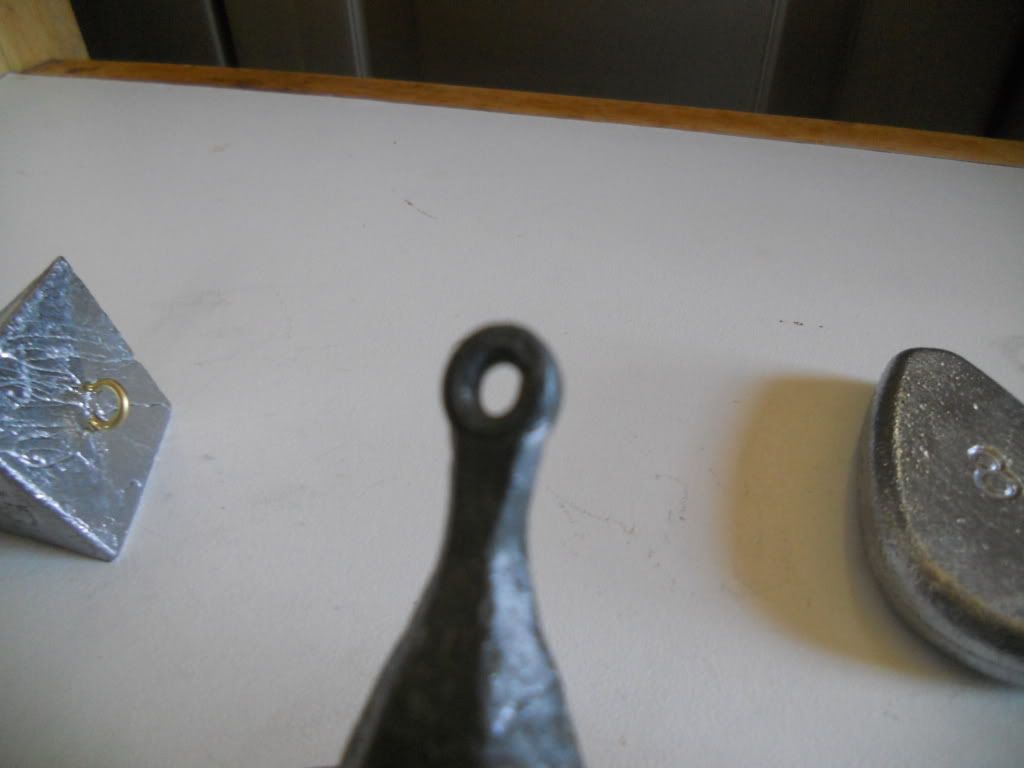
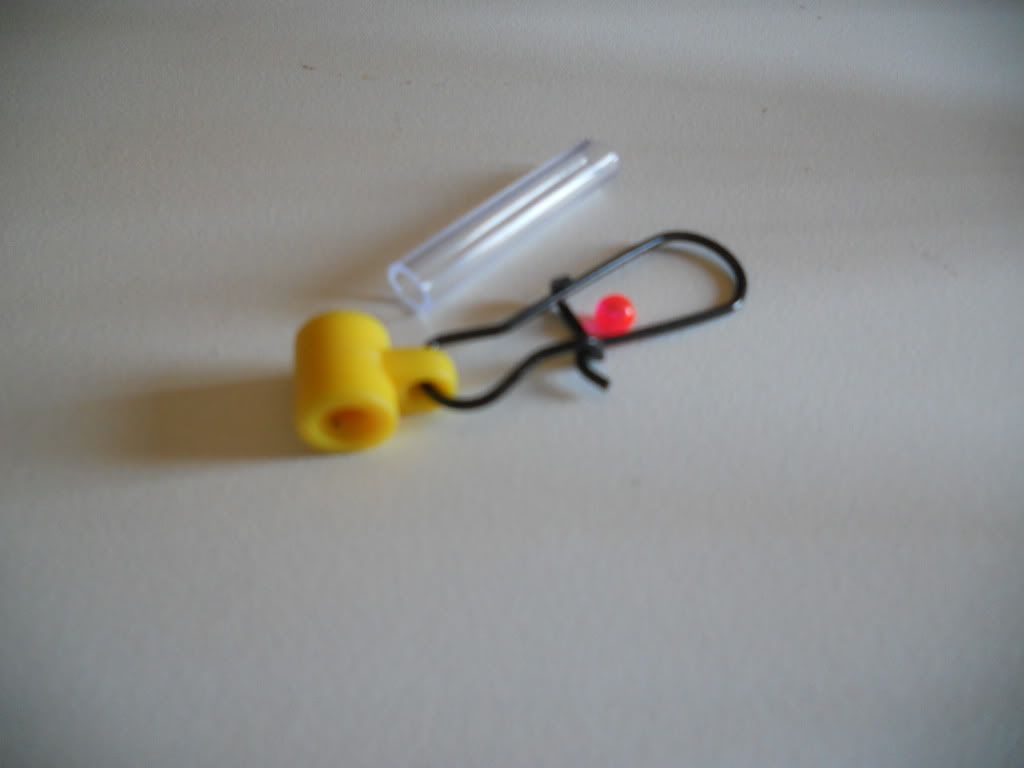
Aquarium tubing, sinker slide, and a bead.
Sinker slides, beads, and aquarium tubing are all often used to reduce the negative effects that sinkers have on knots and the main line. Sinkers that are allowed to sit on the knot of a swivel or hook can often times cause damage from casting and being in constant contact from lively baits, or rubbing caused from current. As mentioned above, not all sinkers have brass eye that slide freely on your main line, so a sinker slide is pertinent to attach heavy sinkers to your main line. I even use the sinker slide for attaching sinkers with brass eye, for the simple fact that the weight of the led sinker is spread over a larger area instead of just the 1/16 inch wide brass eye.
Sinker slides are really handy to have. The snap swivel allows you to add and remove weight as needed. They allow you to tie rigs in advance such as sinker slide/bead/swivel/leader/hook, and add the weight as you find out where you will be fishing. Shown below. It's also great to be able to remove your sinker when carrying your rods from you vehicle to the water. This will prevent the chipping of your gloss and paint on your rod that is caused by sinkers coming into contact with it.
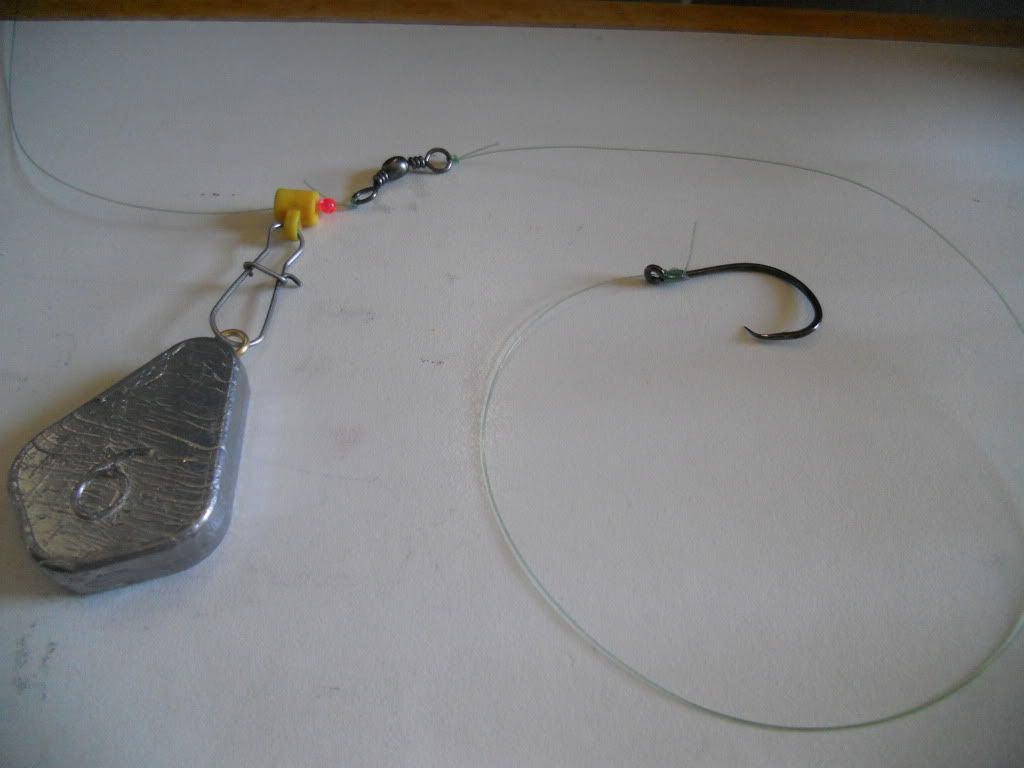
I would appreciate any comments or suggestions regarding this post or any on the blog.
Thanks,
Sean
esbfishing.blogspot.com
Throughout the years we have begun to target bigger waters and bigger fish. With this shift we have made adaptations to our rigs in order to successfully catch fish. We have learned that certain applications call for different sinkers, weights, and styles. Sinkers are as diverse as each application, they come in hundreds of sizes and shapes. They range from sizes of a fraction of an ounce to several dozen ounces. In the past several years we have experimented with dozens of different types and sizes, and we have learned quite a bit about each. As mentioned before, we aren't experts.....just fisherman with a passion for the sport.
Sinkers can be used for many reasons. They can be used to add distance to ones cast, to make a float stand correctly, keep a bait on bottom, or to increase the rate of sinking of a somewhat buoyant bait.

Some of the most common sinkers we use include: split shots, egg sinkers, coin sinkers (and hybrids), pyramid sinkers, bank sinkers, and no rolls. Each sinker was tailored for a specific type of fishing, or type of application. By far the most commonly used sinker would be the split shot. These are the smallest sinkers made, and the easiest to use. Some models have wedges or tails near the back that allow one to open and close the spit shot to easily apply to a line. With that being said, they have been known to cause line failures. By pinching the split shot onto your line, you are actually crimping the line, thus weakening it. It is important to note here that throughout our fishing experience we have found that knots are by far the weakest link of all fishing rigs. That is to say that we have broken off more often at the knot that ties the hook onto our line, than we have at our split shots. Applications of split shots vary greatly. The most common applications include the use of a float, slip or spring, a few feet of line, some split shots, and a hook. Pictured to the right.

Slip float rig with split shots.
Other applications include a simple hook and split shot, artificial and split shot, etc.
Probably the second most common sinker we use is the egg sinker. The egg sinker ranges from one quarter of an ounce to several ounces. The main benefit of using an egg sinker is the ability of the sinker to slide on your main line. When fishing on the bottom the fish can take the bait all of the while the sinker stays in one spot on the bottom, thus not feeling the weight of the sinker. This rig is commonly referred to as the slip sinker rig. The problem with egg sinkers is that they tend to roll on bottom when used in settings with high current or used in area of high slope, such as a ledge. Egg sinkers can also be used on float rigs, used to suspend baits off of bottom. They can be used when fishing artificial baits and lures, often times called the Carolina rig. Once again the idea is to have the fish take the bait while feeling minimal resistance.
Pyramid sinkers have to rank among one of our favorite sinkers if not "the" favorite. They range in sizes of an ounce to over a dozen ounces. They are one of the best sinkers to use in areas of heavy current where other sinkers fail to hold the bottom. The shape of the pyramid allows it to settle along bottom, often times sinking part way into the sand or mud bottom, and anchoring your bait. When used on soft bottoms, the sinker will actually bury itself in the bottom, however when it doesn't bury the corners of the sinker will catch the bottom as it is being drug in the current. With that being said, there are drawbacks to using such sinkers. The edges tend to hold onto things too well and often times find snags, causing one to break off. Pyramids are often noted of falling into rock crevices as well. The geometry of the pyramid makes it prone to snagging when reeling in. The flat top tends to plane the sinker toward the bottom, thus coming into contact with more snags.
Coin sinkers and hybrids are probably our least used sinker, simply because we are new to using them. The coin sinker has many types but are for the most part, often rounded with a brass eye. The main advantage of these sinkers is the fact that they plane upward when retrieving your bait. The sinker actually rises in the water column with increased resistance. When using these style sinkers one can use the current to bounce his/her bait down stream when fishing directly down current. Often times a boat is required for this type of fishing. This makes these sinkers great for anyone who is trolling or drifting for fish.
No roll sinkers are probably second to the pyramid sinkers when ranking by overall use in our sinker arsenal. The flat shape of the no roll allows it to lay flat on bottom, thus catching less current. The flat sides of the no roll also eliminate any roll that might occur when fishing steep bottoms such as ledges. When retrieving the no roll sinker it tends to plane upward, avoiding most major snags. The only disadvantage of a no roll that I have found is that it takes slightly more weight to keep a bait down in heavy current. The drag caused by a large piece of bait will sometimes drag a bait with let's say a 5oz no roll that wouldn't otherwise drag a 5oz pyramid.
The final type of sinker that we commonly use is the bank sinker. Its rounded shape allows for a more aerodynamic design, resulting in further casts. The rounded edges of the bank sinker also reduce the amount of snags they tend to catch when shifting in the current or when being trolled or drifted. It's tall and slender design causes the bank to move significantly more in current, thus anchoring a bait less than a pyramid or no roll. The major design flaw of the bank sinker is the eye in which you attach the line to the sinker. The bank sinker was designed with a led eye rather than a brass eye. When attached directly to one's line it tends to rub, fray, and weaken the main line; causing line failure. Which brings me to the next point.


Aquarium tubing, sinker slide, and a bead.
Sinker slides, beads, and aquarium tubing are all often used to reduce the negative effects that sinkers have on knots and the main line. Sinkers that are allowed to sit on the knot of a swivel or hook can often times cause damage from casting and being in constant contact from lively baits, or rubbing caused from current. As mentioned above, not all sinkers have brass eye that slide freely on your main line, so a sinker slide is pertinent to attach heavy sinkers to your main line. I even use the sinker slide for attaching sinkers with brass eye, for the simple fact that the weight of the led sinker is spread over a larger area instead of just the 1/16 inch wide brass eye.
Sinker slides are really handy to have. The snap swivel allows you to add and remove weight as needed. They allow you to tie rigs in advance such as sinker slide/bead/swivel/leader/hook, and add the weight as you find out where you will be fishing. Shown below. It's also great to be able to remove your sinker when carrying your rods from you vehicle to the water. This will prevent the chipping of your gloss and paint on your rod that is caused by sinkers coming into contact with it.

I would appreciate any comments or suggestions regarding this post or any on the blog.
Thanks,
Sean
esbfishing.blogspot.com








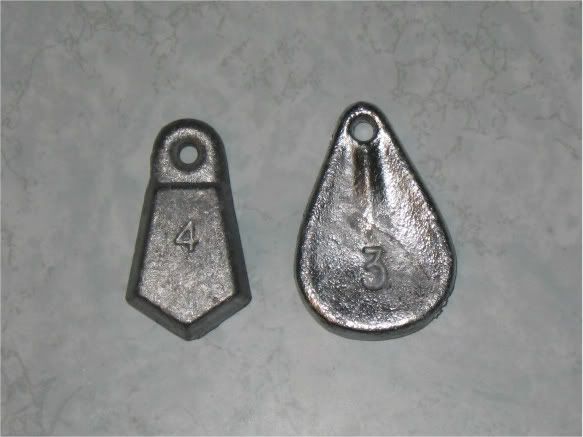
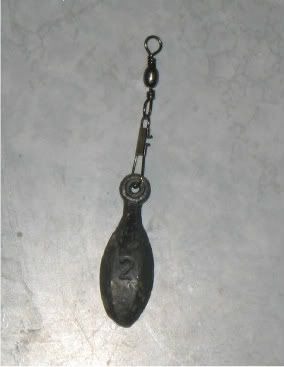

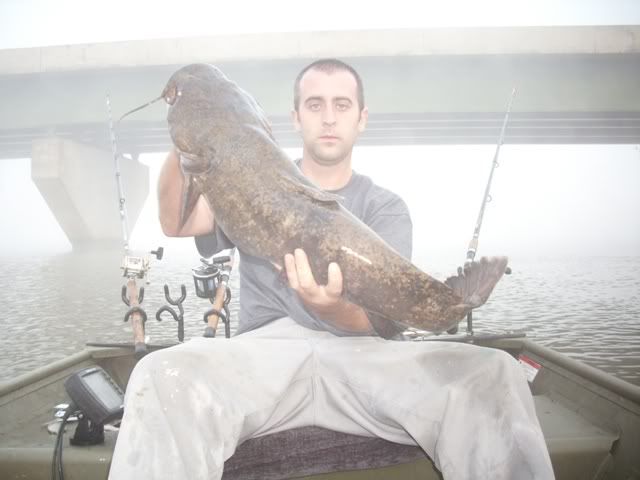

 rollo
rollo




